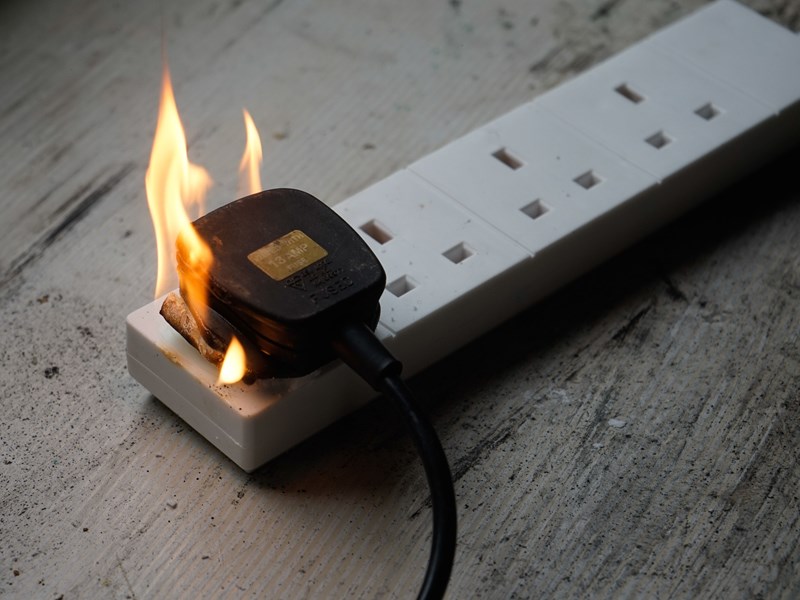Fire caused by faulty plug

Firefighters are urging residents to ensure their electrical items are safe to use following a fire caused by a faulty plug on a vacuum cleaner.
A fire crew from Cannock were called to an address near Wimblebury Road, Cannock, at around 1.05pm yesterday (Sunday 13 March).
On arrival, the crew found a blown plug socket from a vacuum cleaner resulted in black marks appearing on a wall.
No one was hurt and the occupier has been advised.
Faulty electrics such as overloaded sockets and faulty electrical appliances cause around 7,000 house fires across the country.
Jordan Money, Station Manager at Staffordshire Fire and Rescue Service, advises on how people can use their electrical appliances safely.
“Make sure all electrical appliances have a British or European safety mark when you buy them.
“Don’t overload your sockets - keep one appliance to one plug where possible and use the socket overload calculator to reduce the risk of fire.
“Unplug appliances when you are going to bed or not using them.
“High powered appliances such as washing machines should have a single plug socket.
“Never use square box plug adapters, and if using a strip adapter/extension make sure it’s fused and don’t overload it.
“If using a cable drum extension lead, it should be completely unwound to avoid overheating.”
The register my appliance website is designed to make it quicker and easier for the public to register all of their appliances. It provides up-to-date, accurate, contact information for owners who have acquired specific models of appliances within the last twelve years, so manufacturers can issue safety updates or repair notifications to the right homes. The website provides access to the registration pages of over 40 leading brands of domestic appliances, including most of the UK’s top-selling brands of major white goods.
Other electrical items should be registered with the manufacturer when you purchase them. They can be checked for recalls and registered using the Electrical Safety First website.
Published:
